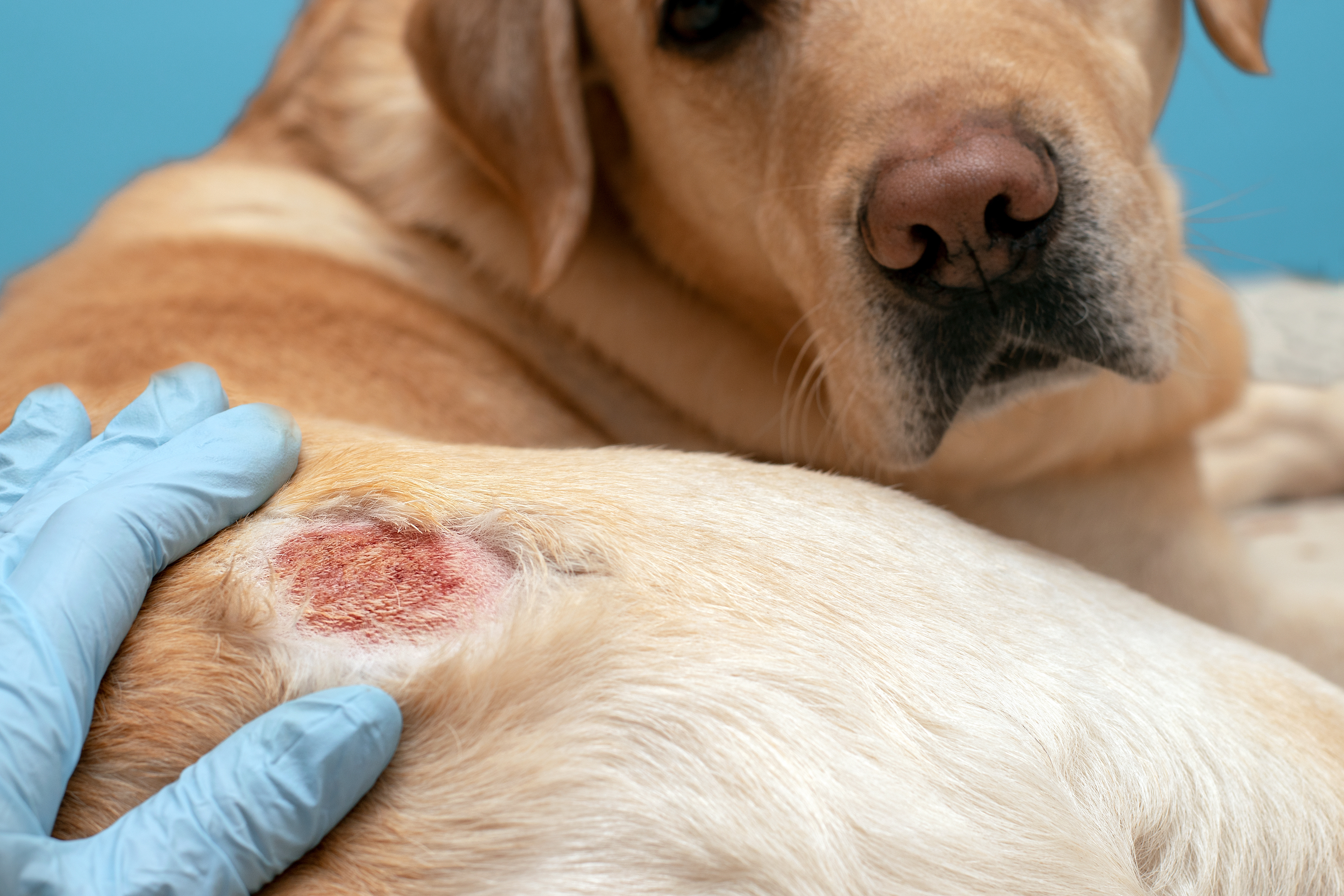Scenario 4
Ceruminous or purulent otitis with presence of rod bacteria
This scenario is similar to the previous one, with difference that Bacteria are not cocci, generally Staphylococci, but are rod. Generally, rod Bacteria are Gram -ve, such as Proteus, Escherichia coli, Corynebacterium or Pseudomonas. These Bacteria have, compared with Gram+ve, a double membrane coated externally by lipopolysaccharides and proteins, more difficult to penetrate by antibiotics. In these cases, is helpful to use Tris-EDTA based products prior to apply topical antibiotics, as Tris-EDTA is able to weaken the membrane of Gram-ve bacteria and enhance penetration and efficacy of antibiotics.

Scenario 5
Bacterial otitis and/or by Malassezia with biofilm
Sometimes otitis does not solve easily due to the fact bacterial strains or of Malassezia are biofilm producers. In fact bacteria can live in planktonic form (single cells), or become sessile, attached to a substrate, and start to produce multicellular colonies embedded with mucopolysaccharides with a mucous-like appearance, which protect them from external agents (drying, antibiotics) and from immune system attacks. In this condition, microorganisms are very difficult to kill and remove and are often responsible for otitis recalcitrant to common topical therapies. In these cases is more than useful, before common cleaning with a disinfectant and/or therapy with topic antibiotic or antimycotic, to do an ear flushing with products capable to disrupt biofilm such as those one with N-acetylcysteine combined with Tris-EDTA.


Scenario 6
Severe otitis with tympanic perforation
Otitis with tympanic perforation are mostly caused by Bacteria (Pseudomonas) and are associated with a foul smell, pus, ulcers and severe pain. In these cases, it is essential to give prednisolone at a dosage of 1-2mg/kg for one to two weeks, and systemic antibiotic for three to four weeks, chosen according to bacterial culture and antibiogram. However, topical therapy, in combination with systemic one, is also very important, starting with a deep cleansing of the ducts performed under sedation by the Vet. As the eardrums are often perforated, it is necessary to use ear flushing products that are not ototoxic for middle and inner ear, such as disinfectants containing up to 0.2% chlorhexidineˇ.
These products should then be continued with daily ear flushing for at least one month, followed by medicated otological drops, combined with above-mentioned systemic therapy.

 België (NL)
België (NL)

 Danmark
Danmark
 Deutschland
Deutschland
 Global English
Global English
 Nederland
Nederland
 Norge
Norge
 Sverige
Sverige




